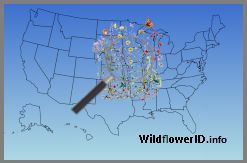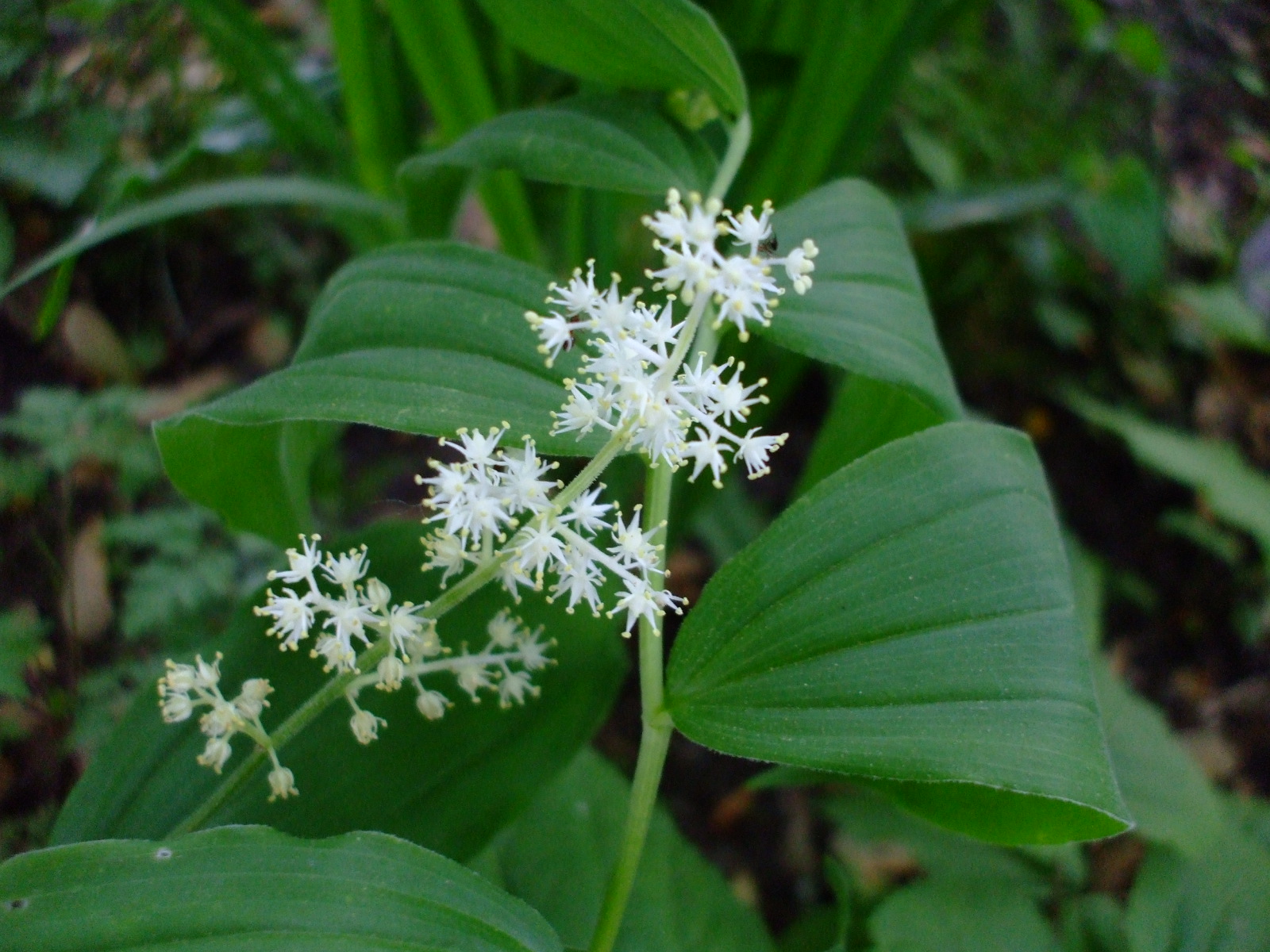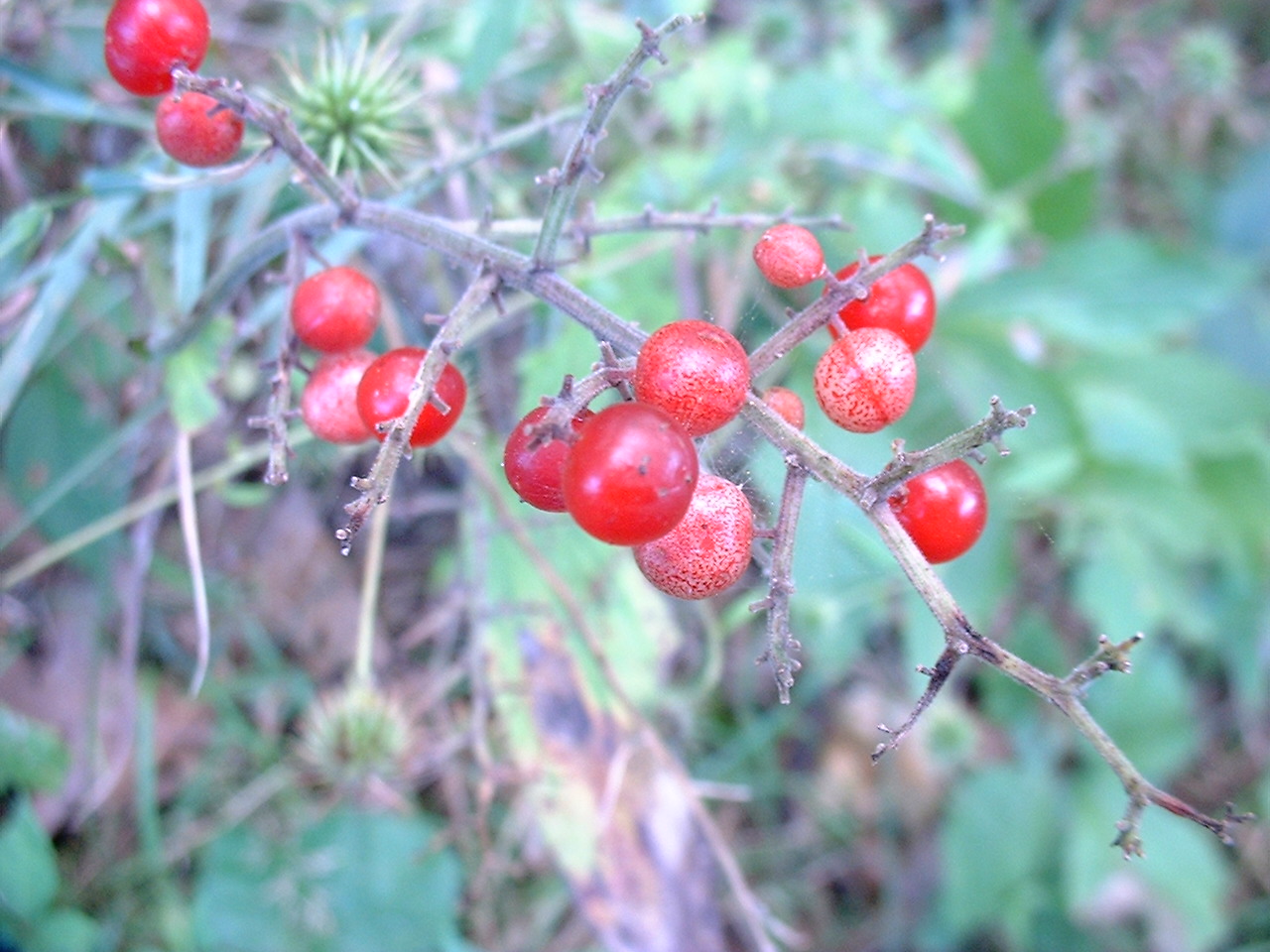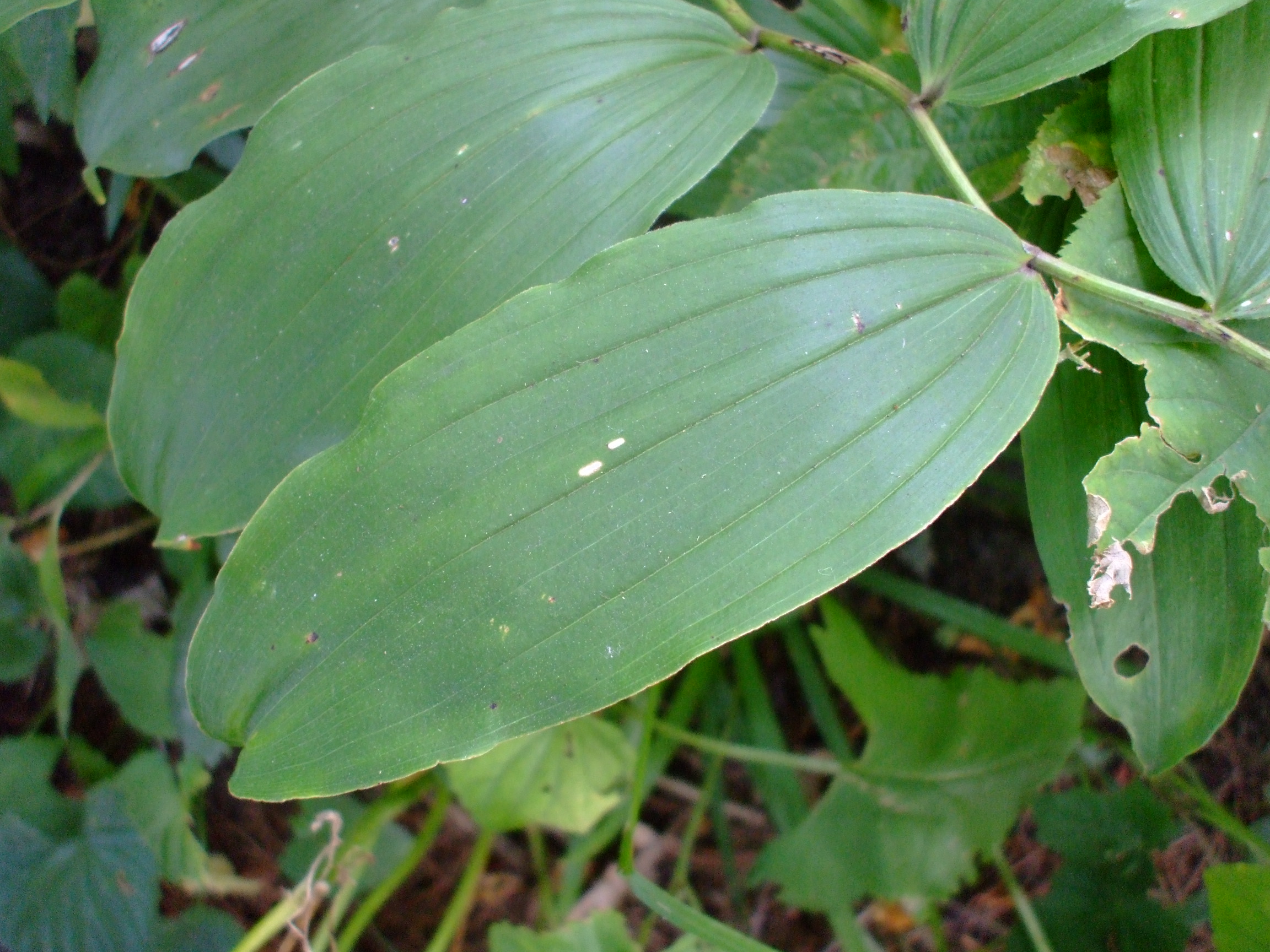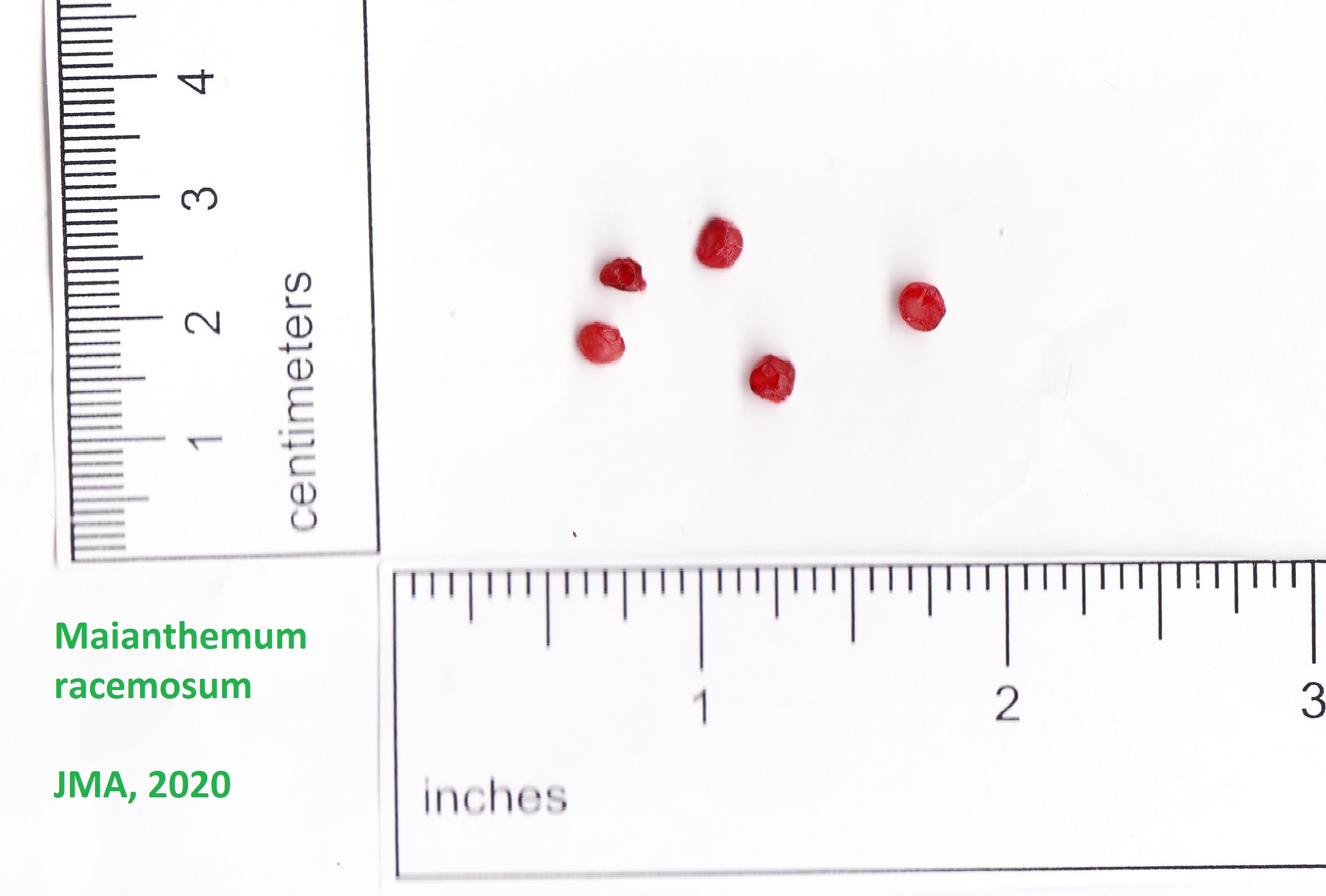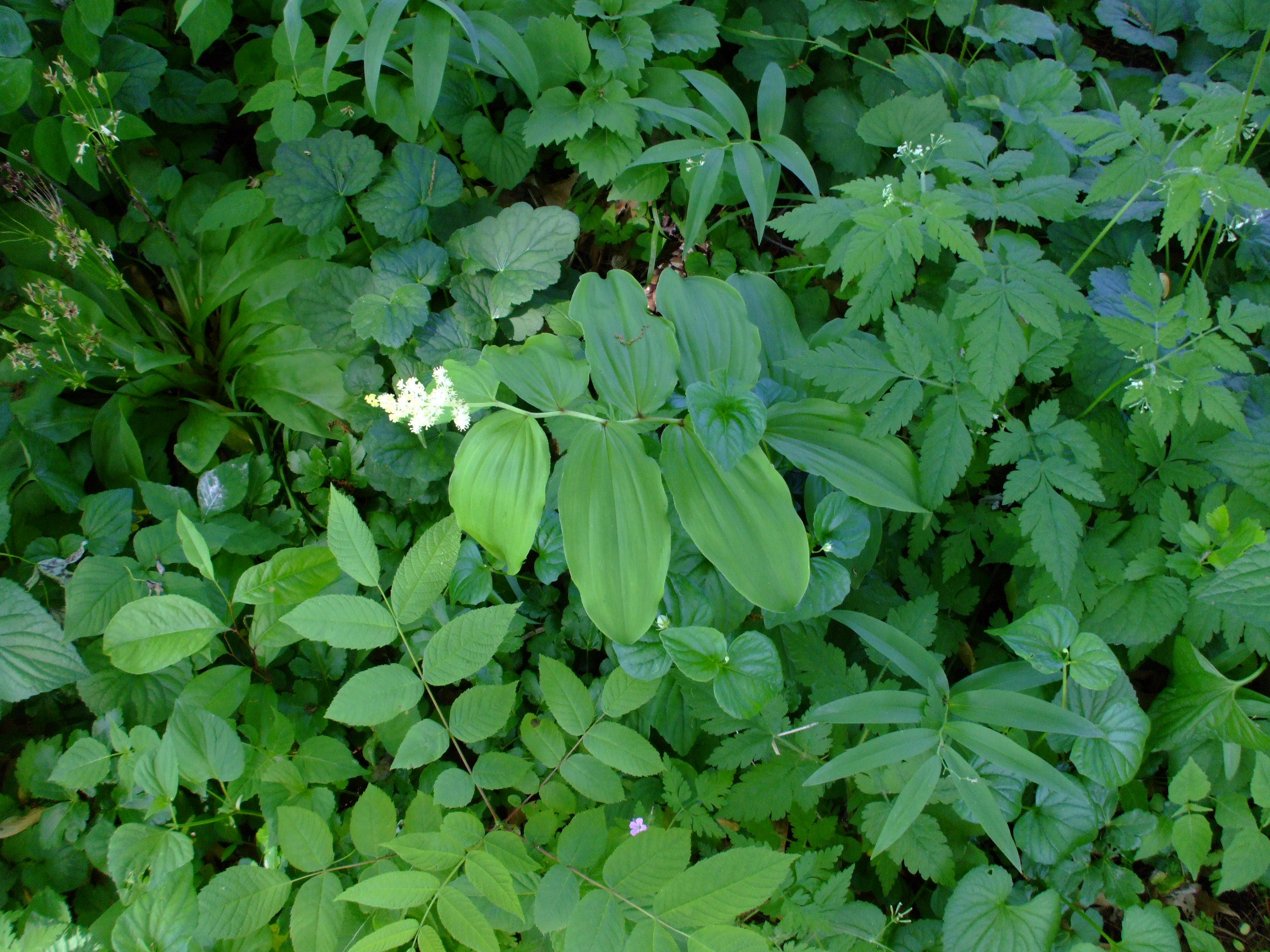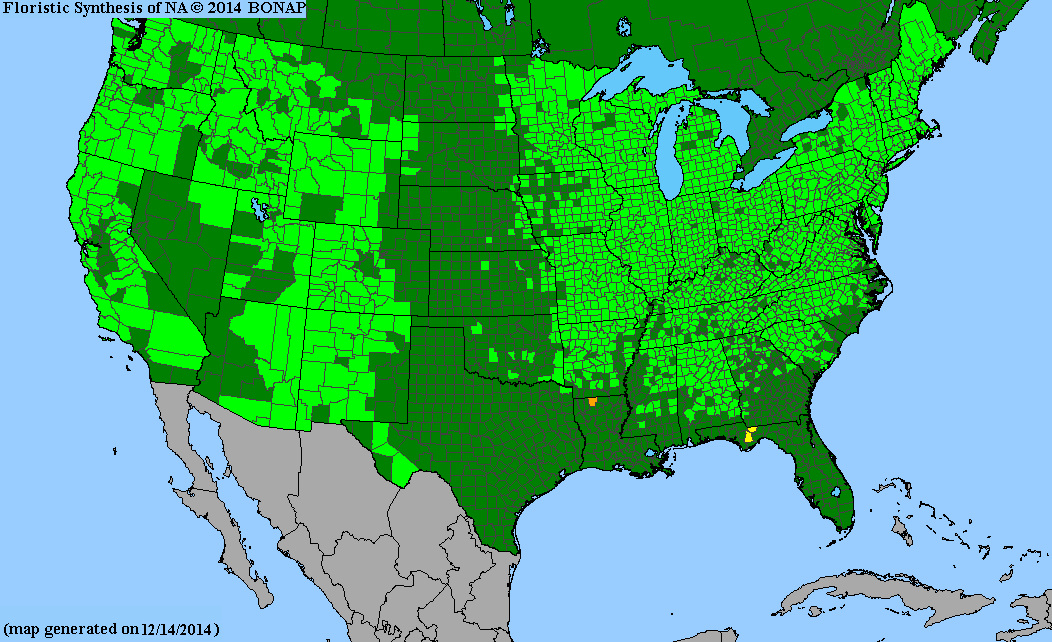Maianthemum racemosum
(False Solomon's Seal)
Other pictures of this plant:
Facts About this Plant:
- Common Names: False Solomon's Seal, Solomon's Plume, Feathery False Lily-of-the-Valley, Treacleberry, False Spikenard
- Synonyms: Maianthemum amplexicaule, Smilacina amplexicaulis, Smilacina ciliata, Smilacina flexicaulis, Smilacina racemosa, Vagnera amplexicaulis, Vagnera australis, Vagnera racemosa
- Lifespan: Perennial
- Zones: 3 - 9
- Type: Forb
- Bloom Time: May - June
- Status: Native
Maianthemum racemosum, or False Solomon's Seal, is native to the entire US. It is a perennial that grows in open woods, usually in partial shade, and can also be on woodland edges and the surrounding area. It blooms in mid to late spring with tall, leafy stalks that have plumes of white flowers; in fall, these leave behind red berries.
This plant has several lookalikes in its genus. But, there are two tall species that look most similar. They are Maiantheum stellatum and Maiantheum racemosum. Both are much larger plants that grow in dry woods. They each also have larger flowers. Maianthemum racemosum has a group of small white to yellowish flowers, and broad leaves that are usually almost 3 inches across, and they have a rough-ish texture. Meanwhile, Maiantheum stellatum has smooth leaves that are usually only one to two inches wide, and the flowers are larger and pure white.
The other three species are very different and not easily confused. They are Maiantheum trifolium, which has lance-shaped leaves, with yellowish flowers with purple stamens, and grows in cool, wet soil. Maianthemum canadense, meanwhile, has only one to two heart-shaped leaves, and smaller, whiter flowers, and only grows to a maximum height of about seven inches. Finally, a western species, Maiantheum dilatatum is equally short, growing only to about ten inches. See a comparison of the five species below.
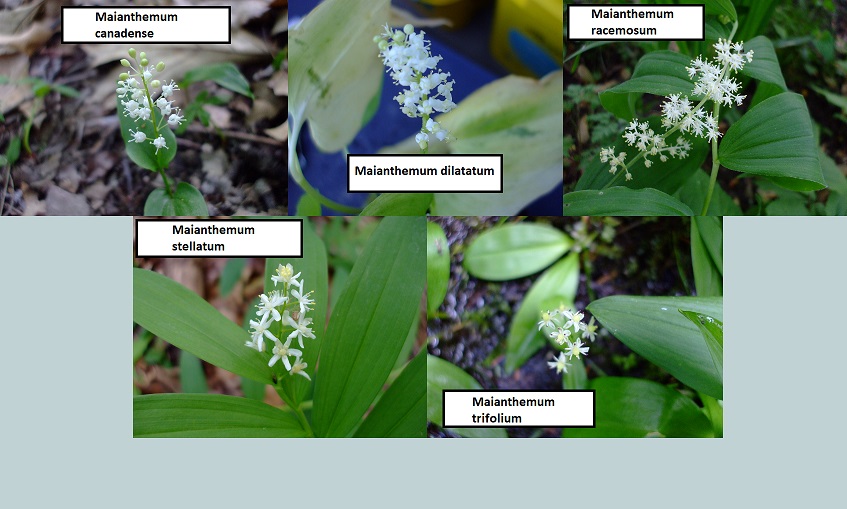
Back to The Plants.
Back to A-Z Listing.
